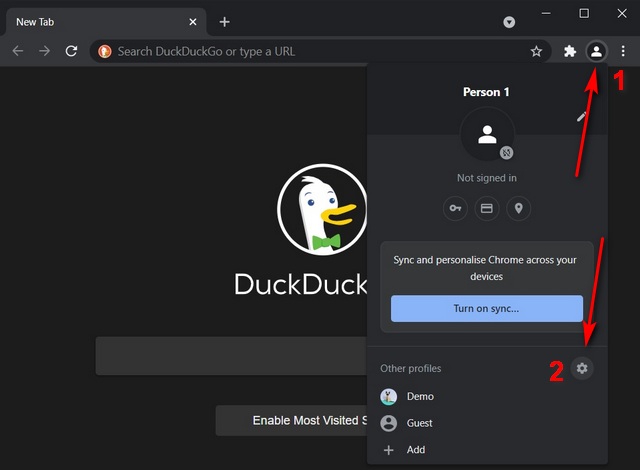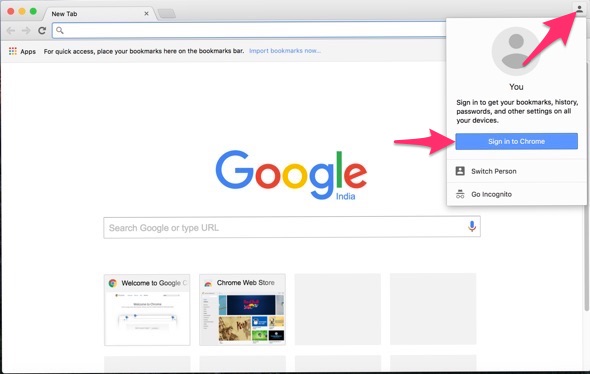

In most cases, a review of logins and storage once a month should be sufficient. In the Reports section, select Account Activity, then choose “Used Storage %” to view a summary of storage activity by user. Large increases or decreases may merit additional review. Sudden changes to storage usage by a user may signal a potential problem. Repeated failures merit additional investigation. A “Failed” login might indicate that a user mistyped a password, although repeated “Failed” or “Suspicious” logins might indicate a potential problem. Look at both the “Failed” logins and “Suspicious” logins. Use the drop-down menu in the upper right to filter the logins. In particular, I recommend that all administrators review Login activity (from within Reports, choose Audit, then Login). Mobile settings changed (any mobile management settings are changed).Calendar settings changed (G Suite only).
#GOOGLE CHROME SIGN IN SERIAL#

Scroll to the bottom of the page to find “Last account activity”, then click on “Details”.To view recent Gmail account activity from your browser, login to Gmail from your laptop (or desktop).A consistent review of the information below helps reduce the possibility of unauthorized account access. All Google users should audit logins and monthly account activity, while Administrators may review many detailed reports. You can avoid many account access issues by simply monitoring your account activity. (If you already use two-factor authentication, review your application-specific passwords.) See Google’s account help pages for more details. You might also change your password, or enable two-factor authentication. Start by revoking account logins from all other locations: access on other systems will then require authentication. To regain complete control over logins, you can take several actions. Every now and then, third-party app access appears. Other times, I’ve discovered accounts active on previously-owned systems. I’ve identified accounts on what were likely intended to be systems “temporarily” logged in, such as a meeting room desktop, a personal laptop, and a spouse’s tablet. If you're exploring this topic for the first time, some logins may surprise you. Only a G Suite backup tool can prevent data loss for you and your users. Human error, ransomware attacks, and protecting yourself with new compliance measures can cost you valuable time and resources. This is why it's essential to ask: what’s your Google account been up to recently? Hopefully, not much.
#GOOGLE CHROME SIGN IN HOW TO#
So this tutorial going to show you how to block sync account google chrome GPO.As someone who manages your company's G Suite accounts, your IT team knows that data loss can happen for many reasons. Google Chrome is the most common browser in the world, whether if it at home or in organizations, some claims that the main reason is that Google Chrome is a fast browser, However, it is less secure.Ģ weeks ago I read an article which present survey that 68 % users are using in google chrome, I don’t know how much it is correct, but one thing I know that we have secure google chrome in our organization, one of the google chrome feature is allowing to users to log in with their personal account and sync the data from computer to computer, what means that if you or some user have open google chrome on his home and browsed on unsecured pages, history, cookies will sync to his computer at work and it could be a big damage, ( I hope you realized why right?)


 0 kommentar(er)
0 kommentar(er)
